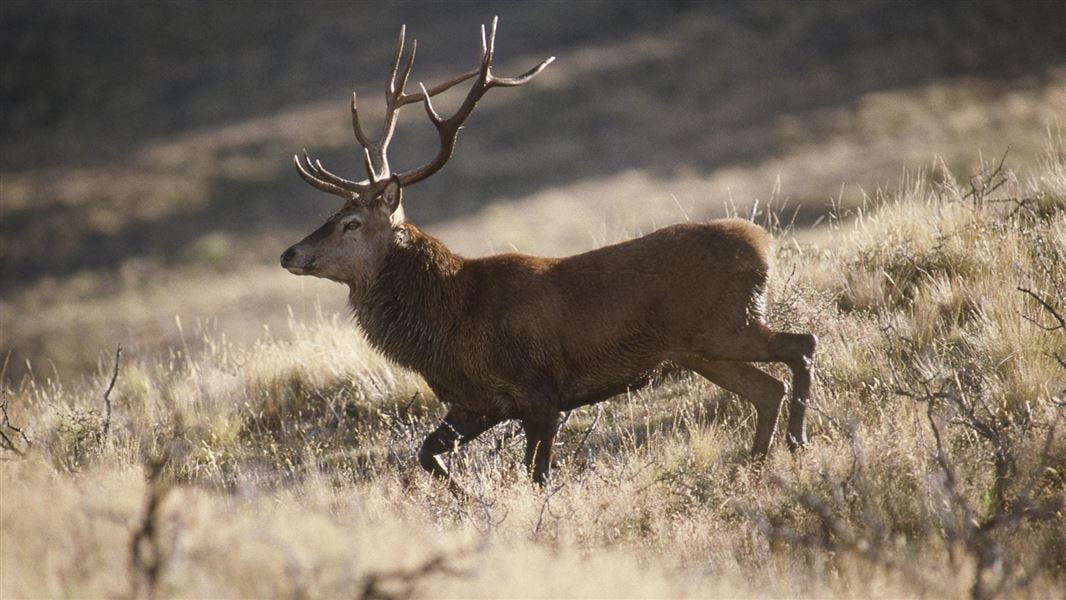
Archived content: This media release was accurate on the date of publication.
Introduction
This is the busiest time of year for deer hunting and hunters must strictly adhere to the firearms safety code.Date: 16 March 2020
This is the busiest time of year for deer hunting. The Department of Conservation is calling for all hunters to strictly adhere to the firearms safety code when hunting on conservation land this season.
A critical factor in several fatal incidents in recent years is hunters failing to properly identify their target.
There are some simple measures a hunter can take to ensure they are 100 % certain of their target says DOC Recreation Supervisor/Senior Ranger, Jim Campbell.
- Hunters should wear coloured clothing to contrast with the environment and the animals being hunted.
- If in any doubt shift to get a better view or just don't shoot at all.
- If hunting in a party don't separate and continue to hunt in the same area. Mountain Safety Council recommends that once you lose sight of a person in your hunting party, you unload and do not reload or take any shots until you regain sight of your partner.
- Ensure the complete animal is seen and don't shoot based on individual items such as colour or shape or sound.
Anybody intending to hunt on public conservation land must get a permit first and be familiar with local hunting safety restrictions. A permit can be obtained from the DOC website.
Hunting permit holders are reminded to adhere to the permit conditions and refrain from hunting in the hours of darkness or 'spotlighting'. This practice is not permitted on conservation land and this is clearly stated on all DOC hunting permits.
"Spotlighting on conservation land poses a serious risk to other people who are using these areas such as campers and walkers and this practice must stop," says Jim Campbell.
"While most hunters are responsible and follow the firearms safety code, firearms safety must be at the forefront of all hunters' minds when in pursuit of that trophy or meat for the table."
Those entering the Mangapurua Valley on a quad or Light Utility Vehicle (LUV) must have a hunting permit even when scoping the area. Be aware this is a multi-use track, expect to encounter cyclists and trampers," says Jim.
Historically, Manawatu/Wanganui is one of the four highest areas for hunting injuries and search and rescues.
Whanganui DOC Operations Manager, Tahinganui Hina recommends that hunters who have had little experience, attend the New Zealand Deerstalkers Association 'Hunter National Training Scheme' (HUNTS), which covers hunting safety as well as other practical outdoor skills.
Information on the firearms safety code can be found at the NZ Mountain Safety Council (MSC) website. Information on safe hunting practices around walks, huts and campgrounds is available on the DOC website. There is also a detailed list of special conditions for specific hunting areas across the country.
Whanganui DOC staff will be checking hunting permit compliance this hunting season and recommend all hunters have their appropriate paperwork available.
Anyone who sees hunting activity at night on conservation land should contact the NZ Police immediately or call the DOC hotline on 0800 DOC HOT (0800 362 468).
Helpful links
- DOC hunting
- What’s Your Big Game Plan? – safety tips on the MSC blog
- MSC urges hunters to ‘be seen, be sure’ – MSC media release
- The New Zealand Deerstalkers Association offers a hunter training programme.
- Complete an Outdoor Intentions Form to leave with a trusted contact. DOC also recommends you carry two forms of communication in case of an emergency.
Tips for staying safe
- Identify your target. Ensure the complete animal is seen – don't shoot based on individual items such as colour, shape, sound or movement. If in any doubt, shift to get a better view or don't shoot at all.
- Use binoculars to identify your target – the rifle scope should only be used to place the shot.
- Know the area you are hunting and share your knowledge with the other members of your party. Before the hunt, have everyone agree on hunting areas with a clearly defined "no fire zone" between areas.
- Don't assume there is no one else nearby.
- If carrying a deer carcass or trophy head, cover it in some way so that it is clearly contrasted with the environment.
- Be visible; wear clothing that contrasts with the environment and the animals being hunted and have appropriate gear.
- Be alert and prepared for changes in conditions. Monitor and assess the weather.
- Be familiar and practised with the firearm you will be using.
- Remember the hunt is not over until everyone is safely home.
Contact
For media enquiries contact:
Email: media@doc.govt.nz